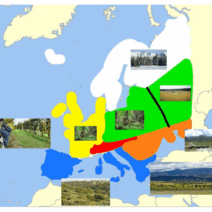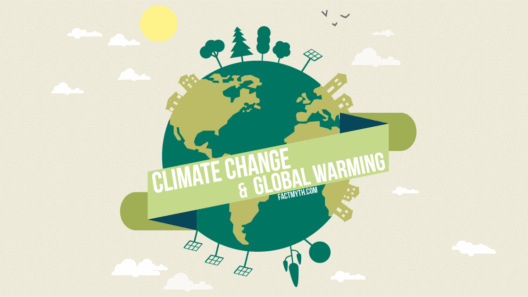As the implications of climate change manifest themselves in unprecedented weather patterns, rising sea levels, and an increase in natural disasters, the role of government in combatting global warming has become a topic of paramount importance. The collective endeavor to mitigate climate change is not merely an environmental issue but also a multidimensional challenge that encompasses economic stability, public health, and social equity. Nations across the globe have adopted various strategies and policies, reflecting a commitment to curbing carbon emissions and fostering sustainable development.
One prevailing observation is that despite increasing scientific consensus on the necessity of immediate action, governmental efforts often seem reactive rather than proactive. This perception may stem from the complexity of international politics, where national interests frequently supersede global imperatives. Nonetheless, many governments are stepping onto the front lines, adopting a myriad of strategies that range from commitment to international accords to the implementation of innovative technologies.
To comprehend the intricate tapestry of governmental initiatives aimed at mitigating climate change, one must first recognize the significance of international cooperation. Agreements such as the Paris Accord represent a concerted global effort to limit the increase in global temperatures to well below 2 degrees Celsius above pre-industrial levels. While some nations have zealously embraced the accord, others have remained reluctant, often prioritizing short-term economic growth over long-term environmental sustainability. The geopolitical ramifications of these decisions are profound, influencing not only domestic policy but also international relations.
One major strategy that governments are employing is the promotion of renewable energy sources. Countries such as Denmark and Germany have made substantial strides in wind and solar energy, demonstrating the feasibility of transitioning to a low-carbon economy. Denmark, for instance, has set a target to produce 100% of its energy from renewable sources by 2050. Such initiatives highlight a broader trend among nations recognizing the imperative to reduce reliance on fossil fuels, which are the primary culprits behind greenhouse gas emissions.
Moreover, financial incentives play a crucial role in accelerating the transition to renewable energy. Governments worldwide are increasingly implementing subsidies and tax breaks for clean energy projects. Such fiscal policies not only stimulate investment in renewable technologies but also create jobs and support economic growth. The alignment of economic incentives with environmental goals serves as a testament to the notion that addressing climate change can yield lucrative opportunities rather than impose onerous burdens on national economies.
Another critical aspect of governmental action is the emphasis on regulatory frameworks designed to limit emissions. Nations are introducing stringent emissions standards for industries and vehicles, seeking to curtail the pollutants released into the atmosphere. The U.S. Environmental Protection Agency (EPA), for example, has historically instituted regulations aimed at reducing emissions from power plants and vehicles. However, the effectiveness of such regulations often hinges on political will and public support. Engaging citizens in climate action and ensuring transparency in policy-making can bolster governmental initiatives and foster a culture of sustainability.
On a local level, city governments are also taking meaningful steps to combat climate change. Urban areas are uniquely vulnerable to its impacts, given their dense populations and infrastructure. Many municipalities have adopted comprehensive plans that include enhancing public transportation, increasing green spaces, and retrofitting buildings for energy efficiency. The proliferation of electric vehicle (EV) charging stations in cities exemplifies a grassroots approach, enabling individuals to make environmentally conscious choices while facilitating a broader shift toward sustainable transportation.
Nevertheless, addressing the climate crisis requires a multifaceted approach, and one of the most significant yet underappreciated aspects is adaptation strategies. Governments are increasingly understanding that mitigation and adaptation are not mutually exclusive; they are intrinsically linked. Coastal communities, for instance, are adapting to the realities of rising sea levels through the construction of resilient infrastructure and restoration of natural barriers like wetlands. Global financial mechanisms, such as the Green Climate Fund, are vital for supporting developing nations that may lack the resources to implement such adaptive measures.
While nations face numerous challenges in their quest to combat global warming, the role of education and public engagement cannot be overstated. Governments must prioritize fostering an informed citizenry that understands the intricacies of climate change. Educational programs that incorporate ecological literacy in school curricula can engender a generation that is not only aware of the implications of climate change but also motivated to take action. When citizens are empowered with knowledge, they are more likely to support ambitious policies and hold their governments accountable.
Additionally, governments are harnessing the power of technology to catalyze significant environmental advancements. Innovative solutions such as carbon capture and storage (CCS) are being explored to mitigate emissions from industries that are difficult to decarbonize. Furthermore, advancements in artificial intelligence and big data have the potential to enhance climate modeling, allowing policymakers to make informed decisions based on predictive analytics. These technologies serve as a linchpin in the ongoing battle against climate change by providing tangible tools to reduce emissions and improve efficiency.
Ultimately, the complexity of governmental action in addressing climate change elucidates a broader narrative about humanity’s relationship with the environment. While challenges abound, the momentum generated by international agreements, local initiatives, and technological advancements reflects a growing recognition of the interdependence between human progress and ecological integrity. The future of global warming mitigation hinges on continued collaboration between nations, a robust commitment to sustainability, and an unyielding determination to forge a path toward a resilient and equitable planet.







